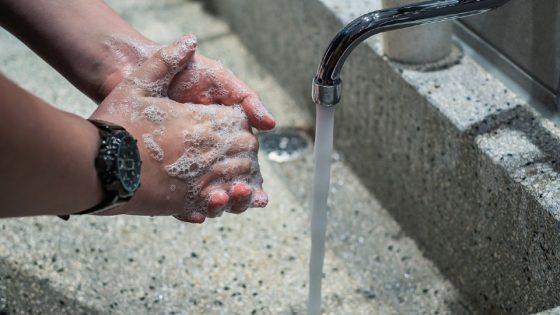In all educational institutions, maintaining a high standard of hygiene is crucial. Facilities Managers play a pivotal role in ensuring the health and safety of students, staff, and visitors. With a myriad of hygiene solutions available, making the right choice can be daunting. Here are top tips to help Facilities Managers select the best hygiene solutions for their campuses…
- Assess Specific Needs: Start by assessing the specific needs of your educational institution. Consider factors like the size of the campus, the number of students and staff, the types of facilities (e.g., laboratories, dining areas, dormitories), and high-traffic areas. This assessment will help you identify key areas that require focused hygiene solutions.
- Prioritise High-Traffic Areas: High-traffic areas such as entrances, corridors, cafeterias, and washrooms require special attention. Opt for durable and efficient hygiene solutions in these areas, such as automatic hand sanitiser dispensers, touch-free soap dispensers, and robust cleaning protocols.
- Choose Eco-Friendly Products: With increasing awareness of environmental issues, selecting eco-friendly hygiene products is essential. Look for solutions that are effective yet have a minimal environmental footprint, such as biodegradable cleaning agents and recyclable materials.
- Ensure Compliance with Health Standards: Ensure that the hygiene solutions you select comply with national health and safety standards. This compliance is crucial for safeguarding the health of campus occupants and avoiding legal complications.
- Invest in Quality Air Purification Systems: Good indoor air quality is vital for a healthy learning environment. Invest in high-quality air purification systems, especially in enclosed spaces like classrooms and lecture halls, to filter out pollutants and pathogens.
- Incorporate Smart Technology: Consider using smart technology solutions, such as IoT-enabled sanitation systems, which can provide real-time data on usage and maintenance needs. This technology can optimise cleaning schedules and ensure timely replenishment of hygiene supplies.
- Focus on User-Friendly Solutions: Choose hygiene solutions that are easy to use and accessible to everyone on campus, including those with disabilities. User-friendly products encourage compliance and proper hygiene practices among campus users.
- Regular Training and Awareness Programmess: Regular training for cleaning staff and awareness programs for students and staff are essential. Educating them about proper hygiene practices can significantly enhance the effectiveness of the solutions you implement.
- Seek Feedback and Conduct Regular Reviews: Once hygiene solutions are in place, seek feedback from users and conduct regular reviews. This approach will help you identify any areas for improvement and ensure the ongoing effectiveness of the hygiene measures.
- Plan for Scalability and Flexibility: The needs of educational institutions can change rapidly. Choose hygiene solutions that are scalable and flexible, allowing for adjustments in response to evolving health guidelines or changes in campus population.
In conclusion, selecting the best hygiene solutions for educational campuses requires a balanced approach that considers specific needs, high-traffic areas, environmental impact, health compliance, smart technology integration, user-friendliness, education, feedback, and scalability. By carefully considering these factors, Facilities Managers can create a safe and healthy learning environment for all campus users.
Are you looking for Hygiene Solutions for your institution? The Education Forum can help!
Photo by Gil Ribeiro on Unsplash





Leave a Reply